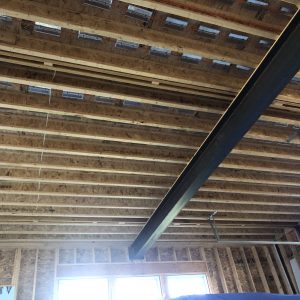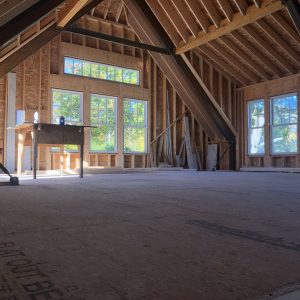Wood flooring options over hydronic radiant heating system
We have built a 28’x49′ 2-story barn with an attached 18’x18′ 1.5 story mudroom, connected to a 3000SF older home. The existing home is heated by a steam system/radiators and we chose to not convert to hot water due to cost/risks. We have chosen a high efficiency, natural gas boiler to handle the (radiant) heating and hot water needs for the addition.
The first floor of the addition is slab on grade and we are going with tile for the mudroom floor; the first floor of the barn is a shop/garage space. The second floors are going to be finished living spaces and will be wood floors (outside of the tiled bathroom floor). The second floor is heated by the hydronic radiant tubing and fin assemblies that are hanging from the sub floor and in the rafter bays above the first floor spaces.
Three questions:
1. What wood flooring materials are the more stable and “best” for a radiant system? I am guessing engineered bamboo? I’d like to come as close as I can do the dark walnut-stained white oak floors in the original house.
2. What is the best way to install these floors over the radiant system to minimize shifting and moisture issues?
3. What insulation/R-value should I use for the rafter bays below the radiant fins/tubes? We have 2×12 rafters (ample room). Part of this space is above a heated living space, and part of this space is above a shop/garage that could be heated to anywhere between 40-65deg.





















Replies
Engineered wood is a good choice. Quarter-sawn oak is stable. You need to make sure the radiant controls don't allow the floor to get too warm to cause problems. If you pick a stable product and keep the water temp in control you shouldn't have shifting issues, that are excessive anyways. Real wood moves, you can't stop it, it will move more over radiant heat. Hanging the tubing below the subfloor is the least desirable way to install radiant heat as you will need to run hotter water through it. I would imagine you should leave the insulation slightly below the tubing? Read the manufacturers install instructions on that. Not sure how you would have moisture issues with radiant. More insulation is better, but insulate to code at least.